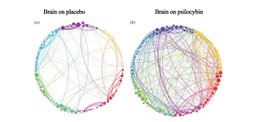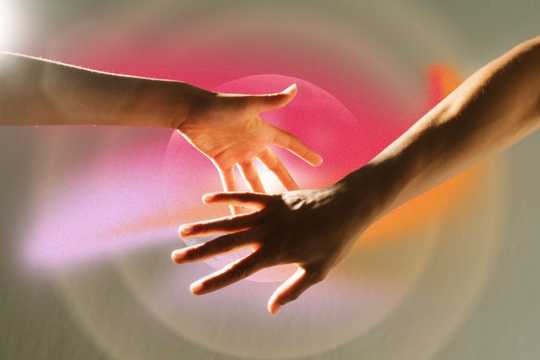Healing Beyond Conventional Paths
The current psychedelic renaissance is reshaping how we understand mental health and personal growth. For many living with chronic suffering—such as depression, anxiety, addiction, and PTSD—traditional treatments have fallen short. Therapy, medication, meditation, religion, and self-help often bring relief, but rarely reach the root causes. People are left searching for something deeper [1].
Psychedelic therapy offers a different path. Unlike methods that take years, psychedelics can spark rapid transformation and evoke powerful, transcendent experiences [2]. With a single dose, they can shift perception and soften entrenched patterns by enhancing neuroplasticity. The brain becomes more adaptable and open to change as new neural pathways form [3]. Dr. Emily Willow, a researcher with the Multidisciplinary Association for Psychedelic Studies, describes this as “a thorough spring cleaning of the brain”—a reset that creates space for clarity, fresh thinking, and lasting change [4].
Credit: Reproduced from Journal of the Royal Society Interface, under license or public domain as applicable.
The Velocity of Change
Traditional therapy is like an old car—slow to start, steady over time. Psychedelics are more like a racecar. They accelerate quickly, launching people into profound states almost instantly. However, as with any high-speed vehicle, the risk of crashing is real. Rapid transformation demands skill, preparation, and care.
Psychedelic substances are powerful amplifiers of the mind [5]. They can induce life-changing integration insight or lead to “dark psychedelic” episodes [6]. Without proper preparation, support, and integration, people can spiral into confusion, distress, or worse. This risk is not abstract; it has precedent. The backlash of the 1960s and ’70s offers a sobering lesson as misuse of psychedelics caused real harm and brought research to a halt for decades [7].
To avoid repeating that mistake, it’s crucial to understand the difference between psychedelics as medicine and psychedelics as recreation. It’s not just about the substance. It’s about the context. The same compound can be healing or harmful. What matters most is the process that surrounds it: intention, support, setting, and skilled integration [8].
For this reason, trained therapists and guides are essential. They help navigate the sometimes tricky terrain of psychedelic experiences and can transform even the most challenging ones into something meaningful.
“Integration doesn’t just help, it’s what turns a powerful experience into lasting healing.”
— Caroline Dickey, MA
The Critical Role of Integration
Research in psychedelic medicine highlights the importance of the therapeutic container before, during, and after the journey. Preparation, guidance, and integration make all the difference.
When this structure is in place, the results can be remarkable. At Johns Hopkins University, Dr. Roland Griffiths and his team found that psilocybin—the psychedelic compound in mushrooms—induced profound mystical states that led to lasting changes in spirituality, mood, and behavior [9]. Another study at New York University showed significant reductions in anxiety and depression among cancer patients. One participant even described finding peace in the face of death [10].
Psilocybin alone didn’t cause these outcomes. They emerged from a careful process grounded in preparation, support, and skilled integration. Without these elements, the same substance can lead to harm. Cases of psychosis, flashbacks, and even suicide fueled the historical backlash against psychedelics. Yet such effects were virtually absent in clinical trials where integration was prioritized [11].
Integration doesn’t just help, it’s what turns a powerful experience into lasting healing.
Carrying the Gold Forward: Integration Resources
- Dark Contemplations: Positive Disintegration and Psychedelic Integration
- Multi-Dimensional Integration—The Mystical Perspective
- Inbodied Integration: Supporting Clients & Clinicians in Taking Psychedelic Experiences Forward
- Somatic Therapy and Psychedelic Integration
- Creative Expression in Spiritual Transformation and Psychedelic Integration with Dr Anne Gustafson, LMFT, PhD
Integration as a Practice of Wholeness
Revelations during a psychedelic journey don’t have to stay in the realm of thought. They can reshape how we relate, respond, and live. Integration enacts this by transforming integration insight into embodied change. It’s the process of drawing meaning from the experience and grounding it in daily life through supportive, achievable practices that sustain growth and transformation over time.
Psychedelic integration becomes especially important during times of loss, upheaval, or transition. These are often the circumstances that lead people to psychedelics, which can unlock emotional and mental depths beyond the reach of conventional methods. However, what psychedelic journeys reveal can be intense, tangled, and hard to hold. Integration helps make space for what surfaces without needing to fix or flatten the experience, even when it’s messy or unresolved.
“We call it integration, but this process isn’t new. Long before psychedelic therapy, the ancient tradition of alchemy offered a symbolic map for this inner work.”
— Caroline Dickey, MA
Staying with what arises and learning from it is essential to transformation. We call it integration, but this process isn’t new. Long before psychedelic therapy, the ancient tradition of alchemy offered a symbolic map for this inner work. Its four stages of transmutation mirror many of the same challenges and revelations that arise in psychedelic experience.
Alchemy: An Ancient Framework for Integration
Often seen as a pre-modern attempt to turn lead into gold, alchemy was fundamentally a practice of transformation and transmutation. Medieval alchemists were not just manipulating matter. They were dissolving, purifying, and reuniting parts of the self, both spiritually and psychologically.
For them, healing meant holding contradiction, not eliminating it. Wholeness was born through tension. They called this the coincidentia oppositorum: the union of opposites. Alchemical texts portray it as a sacred marriage between the red King and white Queen. The King represents the rational and material; the Queen, the intuitive and spiritual. Their union gives rise to the Divine Androgyne, a symbol of integrated consciousness [12].
Credit: (Left) Wellcome Collection, public domain. (Right) Reproduced from Journal of the Royal Society Interface, under license or public domain as applicable.
The union of opposites does not arrive all at once. It unfolds through a fourfold journey of transformation—nigredo, albedo, citrinitas, and rubedo. Each stage reveals a different facet of inner change through fragmentation and renewal. Rather than a strict sequence, they reflect recurring patterns of breakdown, illumination, tension, and reintegration [13].
However, these alchemical stages aren’t a substitute for real-world, grounded support. They offer inspiration and orientation through the nonlinear terrain of psychedelic experience, but they aren’t enough on their own. Just as alchemists worked within lineages of mentorship and shared tradition, integration isn’t a solo endeavor. A skilled therapist, a trusted guide, or a supportive community is essential for turning raw integration insight into embodied understanding. Integration is a shared practice, made real through reflection and relationship.
With that in mind, here are some ways the alchemical journey illuminates psychedelic experience and the unfolding work of integration:
Nigredo: Finding Purpose in the Darkness
In alchemy, nigredo�—the blackening—marks the beginning. It’s the stage of breakdown, decay, and disintegration. For many people, this is what brings them to psychedelic therapy in the first place: a sense of collapse, of being stuck, of something falling apart inside.
The onset of a psychedelic journey can also feel like dissolution. Old identities begin to crumble. Emotions surge. The unconscious spills forward. It can feel like chaos. But this darkness isn’t the end. It’s the fertile soil for transformation.
At first, it may seem like something is going wrong. But the psyche is doing precisely what it needs to: pulling old clutter into the light so we can see, feel, and finally reshape it. Like cleaning a messy room, the disorder is part of the process.
Integration insight: Nigredo isn’t a stage to face alone. It calls for companionship, guidance, and witnessing. A skilled therapist, grounded friend, or wise guide can remind you that this unraveling is not a failure. It’s a sign the deeper work of transformation has begun.
(Left) Alchemical depiction of nigredo: the stage of breakdown and dissolution, of letting go. (Right) Alchemical depiction of albedo: spiritual purification and transformation through immersion.
Credit: (Left) Public domain image, British Library Harley MS 3469. (Right) Wellcome Collection, public domain.
Albedo: Honoring the First Light
After the darkness is albedo—the whitening—the initial illumination, it’s the rinsing off, the sense of renewal. During the psychedelic experience, this may manifest as clarity, insight, or a profound feeling of deep connection to life.
It’s tempting to try to hold onto this clarity forever. But albedo isn’t the final form. It’s a glimpse. A moonlit path through the forest, but not the exit sign. Understanding this helps us appreciate the light without clinging to it or despairing when it fades.
This phase is a good time to share. Talk about what you saw. Journal or draw. Let others witness your insights. Let others help you sort out the signal from the noise. Community and conversation aren’t just comforting, they are integrative acts.
Integration Insight: If you find yourself confused after feeling so clear, remember: illumination fades so that deeper work can begin. You’re not regressing. You’re progressing.
Citrinitas: The Work of Inner Synthesis
In alchemy, citrinitas—the yellowing—marks a turning point. It’s the stage where the soft illumination of albedo begins to blend with the dawning radiance of rubedo. Lunar light gives way to early sunlight.
Credit: Wellcome Collection, public domain.
Citrinitas also reminds us that wholeness isn’t neat or linear. Clarity blends with complexity. Old fears, buried grief, or shadow aspects of the self often resurface. These aren’t signs of failure. They mark a deepening of the work. Integration insight is no longer abstract. They press up against daily life. Ideals meet habits. Inspiration meets resistance.
You may feel like two selves: the luminous one who glimpsed what is possible, and the ordinary one still navigating friction. This tension isn’t a detour. It’s the psyche stretching to include more of itself. The task isn’t to choose one, but to hold onto both, so something new can mature.
Integration Insight: If you feel caught between clarity and confusion, light and shadow, know that you’re right on track. Now more than ever, let your therapist, guide, or circle of support help you hold what is too much to carry alone.
Rubedo: Becoming Whole
The final stage, rubedo—the reddening—is not a finish line. It’s a blossoming. The red King and white Queen join in sacred union, and the self becomes whole by embracing both.
Credit: Public domain via Wikimedia Commons.
Here, clarity meets action. The union of opposites lives in you as a new way of being. Your transformation is visible in how you listen, love, and show up.
You may feel drawn to contribute and create. To reconnect and offer what you’ve learned in service to others. The changes you carry aren’t just for you. They’re for the world you re-enter with greater clarity.
Integration Insight: Rubedo isn’t about staying in an altered state or clinging to the peak experience. It’s about showing up to life with greater honesty, wisdom, compassion, and resilience. Not because the struggle has ended. Because you’ve learned to meet it differently.
Follow your Curiosity
Sign up to receive our free psychedelic courses, 45 page eBook, and special offers delivered to your inbox.The Gold We Seek
The current psychedelic renaissance presents an opportunity, not just for personal healing, but also for collective transformation. When held with care, guided by wisdom, and supported through integration, psychedelic experiences can begin to mend the long-fractured relationship between mind and body, self and world, inner work and outer change.
By weaving ancient frameworks, such as alchemy, into modern healing, we learn to stay with contradiction rather than resolve it. To move beyond binary thinking. To cultivate wholeness that makes room for complexity.
The gold we seek isn’t perfection or purity. It’s the lived practice of transformation. It’s the capacity to meet life with greater depth, authenticity, and care for ourselves and for one another.
And that gold becomes real not in isolation, but in relationship.
References
- Yasinski, E. (2022, May 3). Why Psychedelic Drugs May Become a Key Treatment for PTSD and Depression. Smithsonian Magazine. https://www.smithsonianmag.com/science-nature/why-psychedelic-drugs-may-become-a-key-treatment-for-ptsd-and-depression-180979983/
- Coleman, R. (2017). Psychedelic Psychotherapy: A User Friendly Guide to Psychedelic Drug-Assisted Psychotherapy. Transform Press. https://www.amazon.com/Psychedelic-Psychotherapy-User-friendly-Guide-Drug-assisted/dp/0963009656
- Cobhthaigh, R. (2022). Psychedelics, Used Responsibly and with Proper Caution, Will Be for Psychiatry What the Microscope is for Biology or the Telescope is for Astronomy. Irish Journal for Counselling and Psychotherapy, 22(4), 10–16. https://iacp.ie/files/UserFiles/IJCP-Articles/2022/Psychedelics%2C%20used%20responsibly%20and%20with%20%20proper%20caution%2C%20will%20be%20for%20psychiatry%20what%20the%20microscope%20is%20for%20biology%20or%20the%20telescope%20is%20for%20astronomy.pdf
- Willow, E. (2020, July 12). A Psychiatrist on Finding Meaning in Psychedelic Experiences & Altered States. Goop. https://goop.com/wellness/mindfulness/finding-meaning-in-psychedelic-experiences/
- Grof, S., Hofmann, A. (2008). LSD Psychotherapy: The Healing Potential of Psychedelic Medicine (4th ed.). Multidisciplinary Association for Psychedelic Studies. https://www.amazon.com/Psychotherapy-Healing-Potential-Psychedelic-Medicine/dp/0979862205
- Sjöstedt-Hughes, P. (2015). Noumenautics: Metaphysics – Meta-Ethics – Psychedelics. Psychedelic Press. https://www.amazon.com/Noumenautics-Metaphysics-Psychedelics-Peter-Sjostedt-H/dp/0992808855
- Kordestani, M. (2024, August 9). The Rise of 1960s Counterculture and Derailment of Psychedelic Research. Rolling Stone. https://www.rollingstone.com/culture-council/articles/rise-of-1960s-counterculture-derailment-psychedelic-research-1235076358/
- Weil, A. T., & Rosen, W. (1993). From Chocolate to Morphine: Everything You Need to Know About Mind-Altering Drugs. Houghton Mifflin. https://www.ojp.gov/ncjrs/virtual-library/abstracts/chocolate-morphine
- Griffiths, R. R., Richards, W. A., McCann, U., & Jesse, R. (2006). Psilocybin Can Occasion Mystical-Type Experiences Having Substantial and Sustained Personal Meaning and Spiritual Significance. Psychopharmacology, 187(3), 268–283. https://doi.org/10.1007/s00213-006-0457-5
- Pollan, M. (2015, February 2). The Trip Treatment. The New Yorker. https://www.newyorker.com/magazine/2015/02/09/trip-treatment
- Jung, C. G., & Hull, R. F. C. (1993). Collected Works of C. G. Jung (Vol. 12): Psychology and Alchemy. Princeton University Press. https://press.princeton.edu/books/hardcover/9780691097718/collected-works-of-c-g-jung-volume-12?srsltid=AfmBOorQIWourhVtdFf2Y84Wf0waEldtE6UeJPU-TxqvIlruusWAnV14
- Marlan, S., & Rosen, D. H. (2005). The Black Sun: The Alchemy and Art of Darkness. Texas A & M University Press. https://www.amazon.com/Black-Sun-Darkness-ANALYTICAL-PSYCHOLOGY/dp/1585444251











